
Do you have a question about the Carrier Infinity ICS 58MVC 100 Series and is the answer not in the manual?
| Stages of Heating | Modulating |
|---|---|
| Blower Motor | Variable-speed ECM |
| Gas Valve | Modulating |
| Capacity | 40, 000 to 120, 000 BTU/h |
| Model Number | 58MVC |
| Category | Furnace |
| Brand | Carrier |
| Type | Gas furnace |
| Warranty | 10-year parts limited warranty |
| Fuel Type | Natural gas |
| Series | Infinity ICS |
Caution regarding potential unit damage due to improper installation or misapplication.
Warning about hazards from improper installation, alteration, service, or maintenance.
Caution regarding sharp edges and burrs on sheet metal parts during handling.
Instructions for installing leveling legs for upflow position with side inlets.
Procedures for installing furnace in upflow or downflow configurations.
Guidance for installing furnace in horizontal left or right discharge positions.
National and Canadian safety standards for gas furnaces and HVAC systems.
US and Canadian general installation standards and codes.
Standards for air for combustion and ventilation.
Codes for gas piping installation and pressure testing.
National and Canadian electrical codes for furnace connections.
Details on factory-installed condensate trap for upflow applications.
Instructions for extending condensate trap drain connection for upflow.
Procedure to relocate condensate trap for downflow applications.
Warning about installing casing hole filler cap for safety.
Procedure to relocate condensate trap for horizontal left applications.
Instructions for rerouting pressure switch tubing for horizontal applications.
Caution regarding property damage with condensate traps in horizontal right.
Procedure to relocate condensate trap for horizontal right applications.
Warning about installing casing hole filler cap for safety.
Instructions for connecting drain tubing for horizontal right applications.
Instructions for rerouting pressure switch tubing for horizontal right.
General requirements for furnace location and installation.
General guidelines and standards for HVAC duct system design.
Requirements for acoustical lining and fibrous ductwork.
Instructions for connecting supply air ducts for various furnace applications.
Instructions for connecting return air ducts for various furnace applications.
Warning about operating unit without filter or with door removed.
Caution regarding sharp edges when cutting filter support rods.
Caution regarding intermittent operation due to filter issues.
Warning about hazards related to gas piping installation.
Warning about electrical shock hazards during installation.
Caution regarding intermittent operation due to grounding issues.
Instructions for making 115-V electrical connections.
Warning about using aluminum wire for connections.
Instructions for connecting an accessory Electronic Air Cleaner.
Instructions for connecting an accessory humidifier.
Caution regarding premature component failure due to air issues.
Guidelines for combustion air and vent pipe systems.
Procedures for installing a direct vent (2-pipe) system.
Materials required for the ventilated combustion air option.
Determining the correct diameter for combustion air and vent pipes.
Instructions for attaching the vent pipe to the furnace.
General guidelines for vent pipe termination location.
Guidance for extending sidewall vent pipes and insulating them.
Instructions for installing direct vent termination kits.
Procedure for installing concentric vent termination kits.
Procedure for installing two-pipe vent termination kits.
General requirements and notes for condensate trap and drain connections.
Measures to protect condensate drains from freezing.
Initial checks and requirements before starting furnace operation.
Instructions for setting furnace control setup switches.
Setting switches for matching furnace airflow to cooling unit.
Setting switches for continuous fan or low-cooling airflow.
Caution regarding intermittent operation if control is not grounded.
Operation with single-stage thermostat and adaptive heating mode.
Operation with single-speed air conditioner in cooling mode.
Operation with single-stage thermostat and two-speed cooling.
Operation with Thermidistat for dehumidification control.
Procedure for setting the natural gas input rate based on altitude.
Caution regarding intermittent operation if temperature rise is not set correctly.
Procedure for testing the primary limit control for overheating.
Procedure for testing the draft inducer pressure switches.
List of items to verify during installation.
List of items to verify during start-up.
Items to check related to load calculations.
Items to check for combustion and vent piping.
Items to check for condensate drain system.
Items to verify during start-up.
Items to check for thermostat anticipator settings.
Items to check for safety control operation.


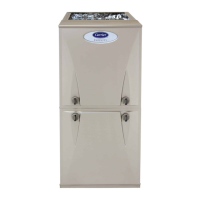
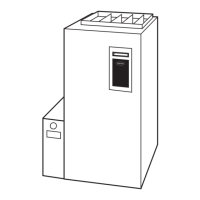
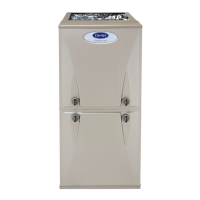


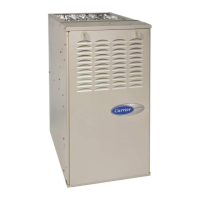

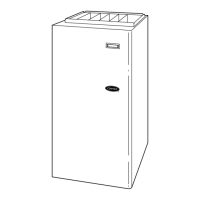
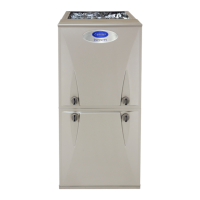
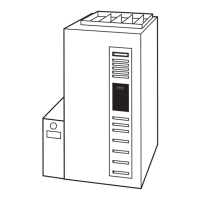
